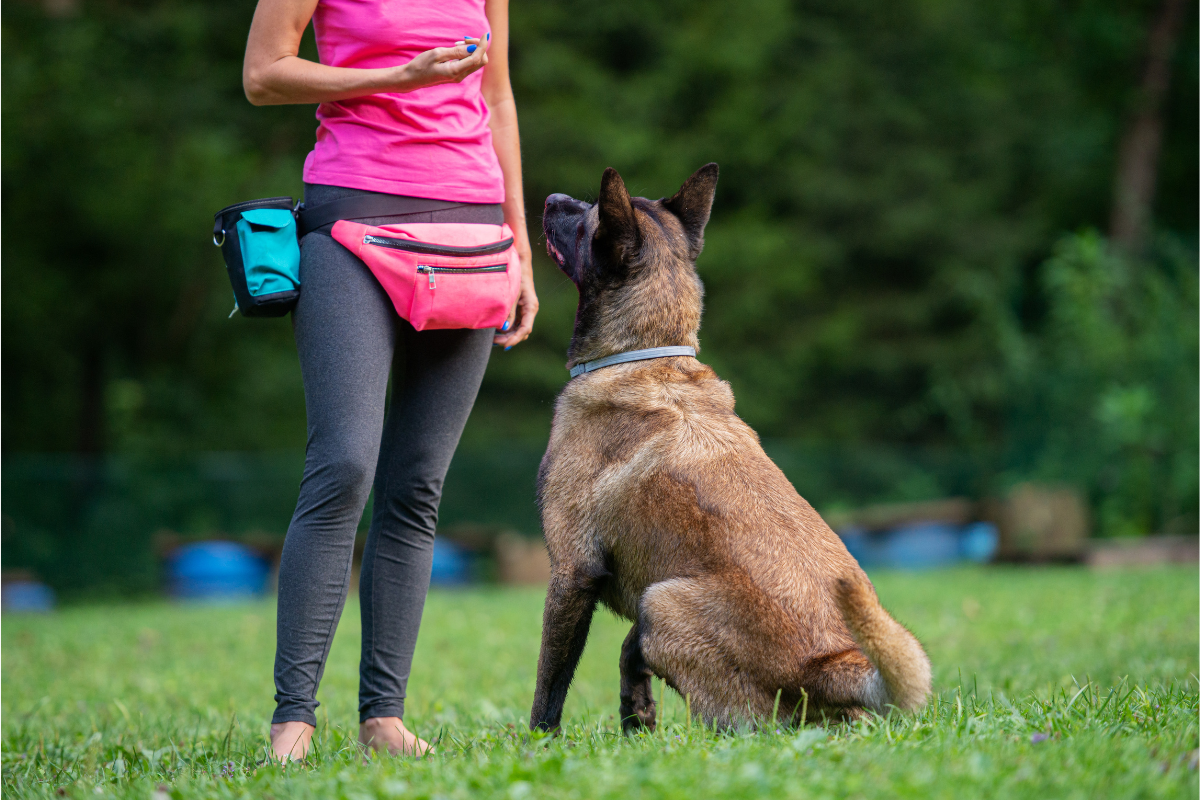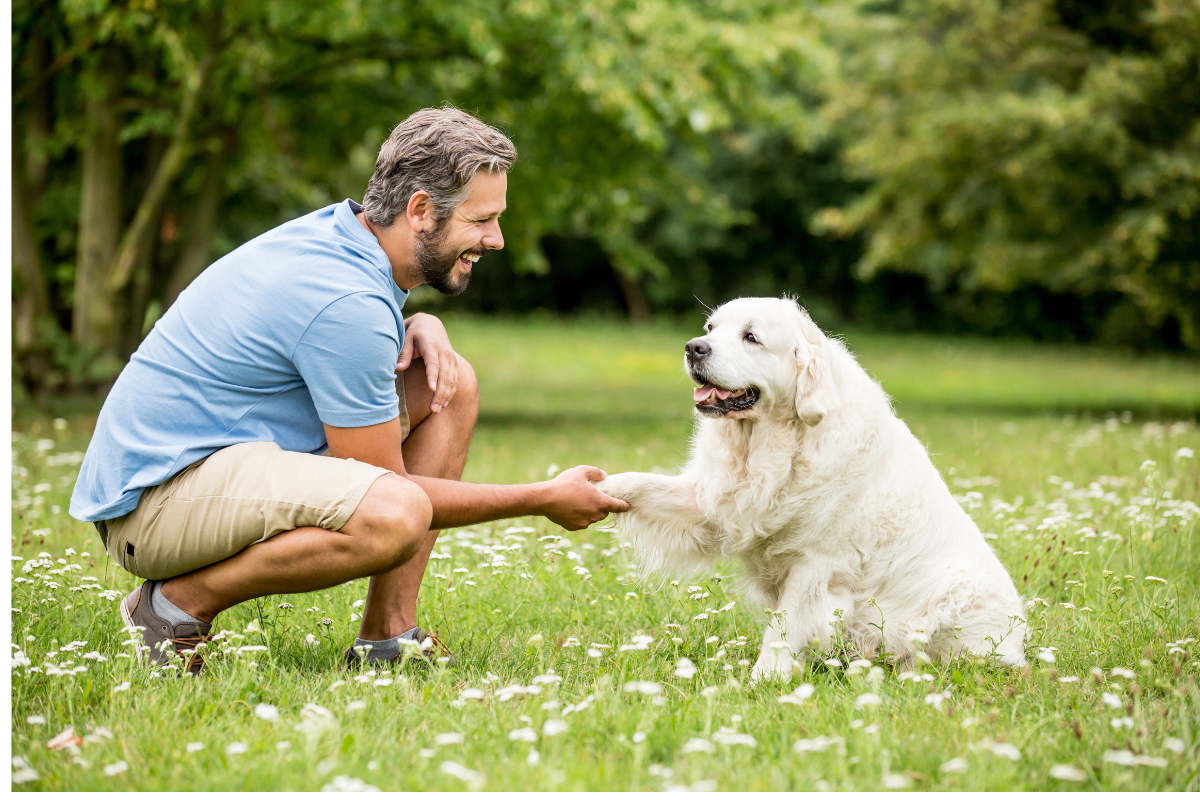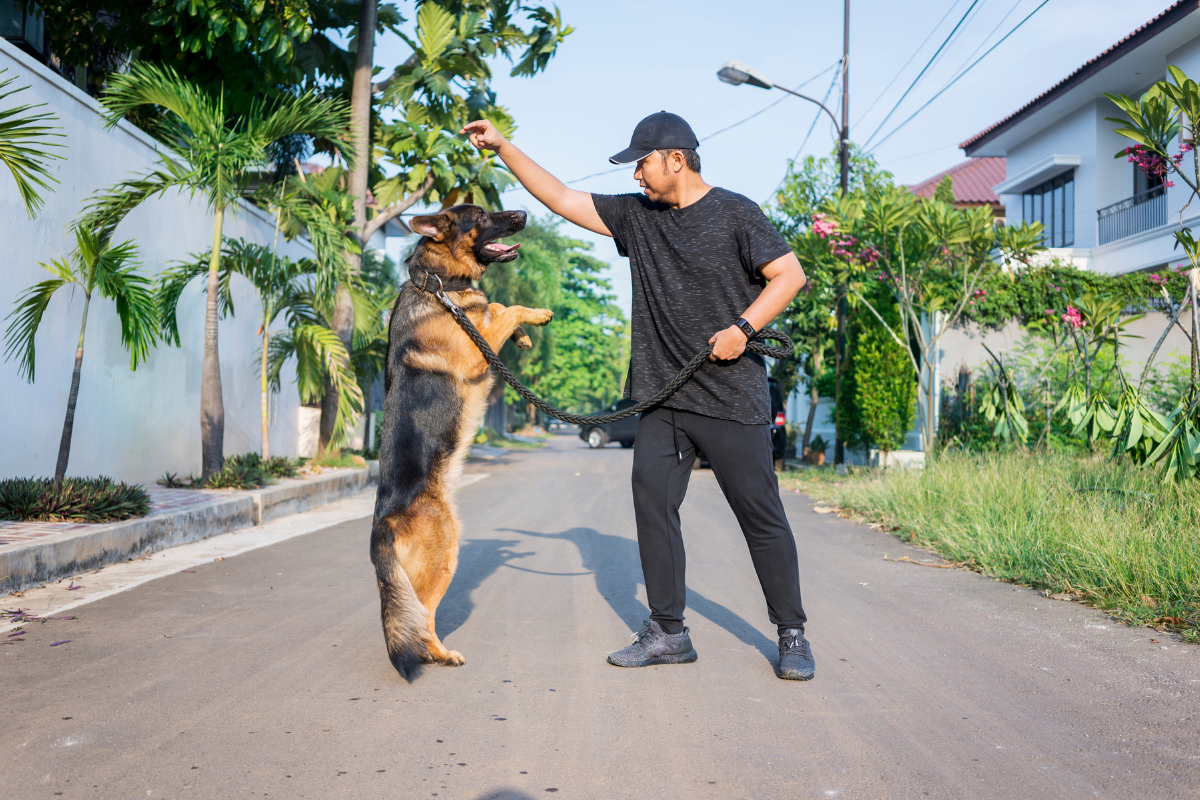Dog training is important for responsible dog ownership, ensuring an obedient, well-behaved companion, and strengthening the relationship between the owner and the pet.
But, the period of dog training can vary depending on various factors, which include the dog’s breed, age, individual temperament, and education dreams. This article will discover the exceptional aspects of current dog education and provide insights into the time it takes to educate a dog completely.
Leash Training Dogs and Puppies:
Leash education is an important skill to train dogs because it allows them to stroll evenly and correctly along with their owners. The time it takes to leash educate a dog can range from a few days to several weeks, depending on the canine’s previous stories, age, and willingness to cooperate. Consistency, advantageous reinforcement, and persistence are key elements in successful schooling.

Potty Training:
Potty training is one of the first and most crucial skills to teach a new puppy or even an adult dog transitioning to a new environment. While some dogs may grasp the concept within a few weeks, others may take several months to become fully reliable.
It requires establishing a routine, closely supervising the dog, and rewarding desired behavior. Most dogs can be potty trained with consistent training and a structured approach.
House Training and Crate Training:
House training involves teaching a dog to eliminate inappropriate outdoor areas, while crate training focuses on providing a safe space for the dog. The time it takes for house training and crate training varies depending on the individual dog’s age, previous experiences, and consistency in training. With positive reinforcement, a regular schedule, and patience, dogs can learn these skills within a few weeks to a couple of months.
Puppy Biting:
Puppies explore the world with their mouths, and biting is a natural behavior during their early stages of development. However, it is important to redirect this behavior towards appropriate chew toys and discourage biting humans.
The duration to address puppy biting can range from a few weeks to a few months, as consistent training and socialization are needed to teach puppies proper bite inhibition.

When Should You Start Training Your Dog?
Training should preferably start as early as feasible, irrespective of the dog’s age. Puppies can begin with fundamental obedience education as young as 8 weeks old.
Early socialization and schooling lay the muse for top behavior and prevent future issues. But, it’s in no way too late to begin schooling a person’s dog, as they can learn new abilities and behaviors with the proper technique.
How To Socialize Dogs and Puppies:
Socialization is a critical component of dog schooling, which includes exposing puppies to numerous people, animals, environments, and reviews. This system enables them to end up properly adjusted, confident, and friendly companions.
Socialization should begin in the puppy stage and continue throughout their lives. The duration of socialization varies, but a well-socialized dog is typically the result of consistent efforts over several months.
Is Dog Training Really Worth It?
Absolutely! Dog training provides numerous benefits for both dogs and their owners. It promotes suitable behavior, prevents behavioral issues, complements conversation, and strengthens the dog’s and the proprietor’s bond. Nicely-skilled puppies are more likely to be protected in numerous activities and have higher exceptional lifestyles.
5 Obedience Commands:
Obedience instructions are important for a nicely-behaved and responsive dog. Teaching those instructions no longer best improves the dog’s conduct but also strengthens the bond between the canine and its proprietor. Here are five fundamental obedience commands every dog should learn:

Sit
The “take a seat” command is among the first and most fundamental to educating a dog. It includes having the dog sit down on their haunches with their front paws on the ground. This command is useful for controlling impulsive behavior, greeting guests politely, and preparing for other commands.
Stay
The “stay” command instructs the dog to stay inside the equal position until launched by its owner. It’s critical to protect the dog in diverse situations, stopping them from walking into risky areas or drawing near strangers without permission.
Come
The “come” command is vital for calling the dog back to its owner. A reliable recall is essential for off-leash activities, as it allows the owner to regain control and keep the dog safe in potentially risky environments.
Heel
The “heel” command teaches the dog to walk politely beside its owner without pulling on the leash. This command promotes a nicely-mannered on-foot enjoyment, making walks more exciting and potential for the dog and the owner.
Down
The “down” command instructs the canine to lie on their chest with all four paws on the floor. It can be used as an opportunity to take a seat command in certain conditions and is beneficial for maintaining the dog calm and controlled in public settings.
When teaching obedience commands, positive reinforcement techniques such as treats, praise, and affection are highly effective in motivating and rewarding the dog for its good behavior. Consistency, patience, and regular training sessions are key to successfully instilling these essential obedience commands in any dog, regardless of age, breed, or size.
Can you potty teach a dog in three weeks?
While some puppies may grow to be potty skilled within 3 weeks, it’s important to understand that each dog is unique. Elements along with breed, age, consistency in schooling, and character temperament can impact the length of potty education.
It’s crucial to remain patient and regular and provide wonderful reinforcement at some point of the process.
Number of Sessions to Train a Dog:
The number of training sessions needed to fully train a dog can vary depending on multiple factors. A few weeks of regular training sessions are typically sufficient to establish these fundamental skills for basic obedience commands, such as sit, stay, and come.
However, more complex tasks or behaviors may require extended training. Advanced skills like agility, service dog tasks, or specialized tricks may require several months of consistent and focused training sessions to achieve proficiency.
The individual dog’s learning ability and temperament play a significant role in training. Some puppies may moreover draw close to new commands rapidly and reply properly to training, whilst others might need extra time and patience to analyze and toughen the popular behaviors.
Consistency is a key detail in dog training. Ordinary, based education sessions and repetition of commands assist in gaining knowledge of and ensuring that the dog retains the talents over time.
Ultimately, the time required to teach a dog varies, and it is way vital to tailor the training technique to the specific needs and capabilities of the dog to obtain fine outcomes.
Effective reinforcement, staying electricity, and a strong bond between many of the dogs and their handler are essential for fulfilling training outcomes.

Age of a Puppy Before Obedience Training:
Puppies can begin basic obedience training as early as eight weeks old, but it is crucial to bear in mind their personal readiness and developmental stage. At the same time, beginning training early has its advantages; not all puppies can be emotionally or physically equipped at this age.
An essential aspect of early education is socialization, introducing the puppy to numerous environments, humans, and different animals to construct self-belief and reduce worry or anxiety in new situations.
Primary obedience instructions like take a seat, live, come, and down can also be introduced during this era through the usage of positive reinforcement techniques.
Early training sets the inspiration for a nicely-behaved and well-adjusted grownup dog, preventing future behavioral troubles and making studying smoother because the pup grows.
An expert dog instructor can offer guidance on the right age and training strategies primarily based on the person’s pup’s desires and temperament.
The Duration of Training a Service Dog:
Training a service dog typically takes a prolonged period, ranging from several months to 2 years. Service dogs undergo specialized education to carry out responsibilities that help people with disabilities.
The training method includes coaching precise talents tailor-made to the individual’s wishes and might vary depending on the task’s complexity and the dog’s aptitude.
When Do You Start Training a Service Dog?
Training a service dog starts with early socialization and primary obedience training during the puppy stage. However, formal service dog training typically starts around one year of age when the dog has matured physically and mentally.
The duration of training depends on the specific tasks the dog needs to learn and their individual progress. Service dogs undergo specialized training tailored to assist their handler’s needs, such as guiding individuals with visual impairments, alerting those with hearing impairments, or assisting with psychiatric conditions.
Building a strong bond with the handler and maintaining ongoing education are crucial aspects of successful service dog training.
Summary:
The time it takes to fully train a dog can vary widely depending on numerous elements, including the dog’s breed, age, temperament, preceding education, and the precise abilities or behaviors being taught. Typically, it takes numerous months to a year to fully train a dog, but a few elements of training can remain throughout the dog’s existence.
Within the case of provider dog schooling, formal training normally starts off-evolved around twelve months of age whilst the dog has matured bodily and mentally. The duration of carrier dog training varies based totally on the specific duties the dogs desire to learn and their owner’s progress. It involves early socialization, basic obedience training, specialized task training, public access training, and ongoing proofing to ensure reliability.
For potty training, which is an important aspect of responsible pet ownership, the process for dogs can take several weeks to a few months. Potty training involves establishing a consistent routine, choosing a designated potty area, using positive reinforcement, supervising the dog to prevent accidents, and learning to recognize the dog’s cues for needing to go.
Successful dog training requires patience, consistency, positive reinforcement, and a strong bond between the dog and its handler. Tailoring the training approach to the individual dog’s needs and celebrating their progress along the way is essential. Training should be seen as a continuous process throughout the dog’s life, as ongoing reinforcement and learning help maintain the dog’s skills and behaviors over time.


